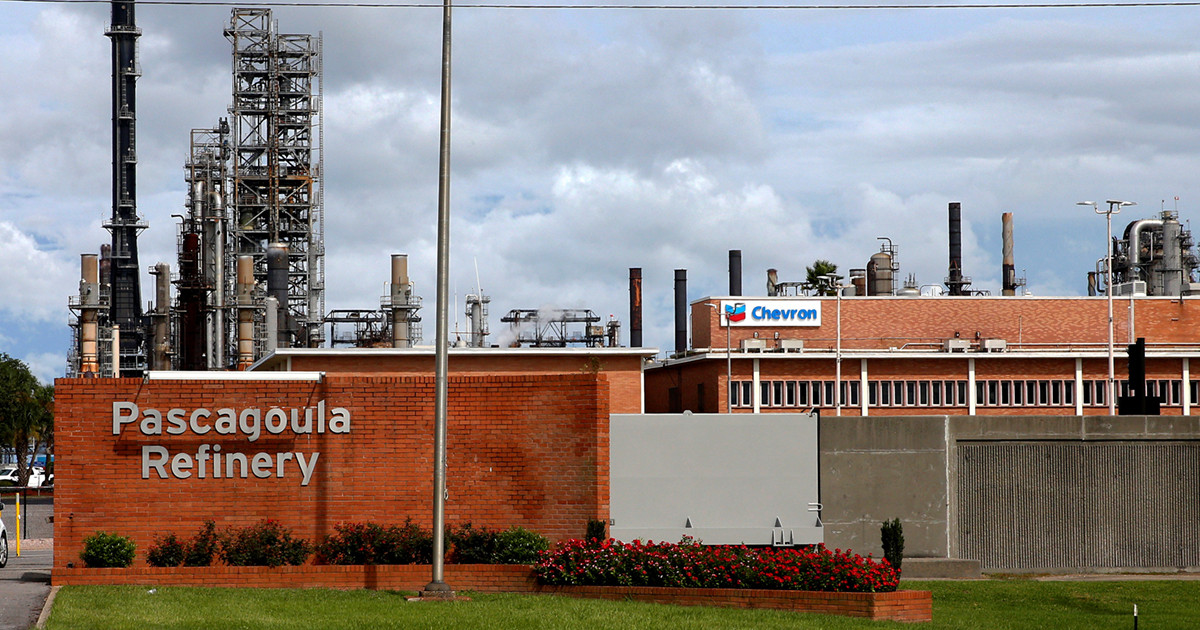The Environmental Protection Agency approved a component of boat fuel made from discarded plastic that the agency’s own risk formula determined was so hazardous, everyone exposed to the substance continually over a lifetime would be expected to develop cancer. Current and former EPA scientists said that threat level is unheard of. It is a million times higher than what the agency usually considers acceptable for new chemicals and six times worse than the risk of lung cancer from a lifetime of smoking.
Federal law requires the EPA to conduct safety reviews before allowing new chemical products onto the market. If the agency finds that a substance causes unreasonable risk to health or the environment, the EPA is not allowed to approve it without first finding ways to reduce that risk.
But the agency did not do that in this case. Instead, the EPA decided its scientists were overstating the risks and gave Chevron the go-ahead to make the new boat fuel ingredient at its refinery in Pascagoula, Mississippi. Though the substance can poison air and contaminate water, EPA officials mandated no remedies other than requiring workers to wear gloves, records show.



The EPA didn’t release a report that people continually exposed to water will definitely get cancer.
These two new fuels using plastic-based refined chemicals have been determined by the EPA to definitely give people cancer over repeated exposure throughout their lives.
These poisonous chemicals determined by the EPA read nothing like jokes for middle school science teachers.
They don’t even name the agent in question, or provide any information on its chemical composition. There is no way to corroborate any of the information given.
Do you even critically think, bro?
The chemicals subject to these proposed SNURs are as follows:
PMN Numbers (proposed 40 CFR citation): P–21–144 (40 CFR 721.11781), P–21–145 (40 CFR 721.11782), P–21–146 (40 CFR 721.11783), P–21–147 (40 CFR 721.11784), P–21–148 (40 CFR 721.11785), P–21–149 (40 CFR 721.11786), P–21–150 (40 CFR 721.11787), P–21–152 (40 CFR 721.11788), P–21–153 (40 CFR 721.11789), P–21–154 (40 CFR 721.11790), P–21–155 (40 CFR 721.11791), P–21–156 (40 CFR 721.11792), P–21–157 (40 CFR 721.11793), P–21–158 (40 CFR 721.11794), P–21–160 (40 CFR 721.11795), P–21–161 (40 CFR 721.11796), P–21–162 (40 CFR 721.11797), and P–21–163 (40 CFR 721.11798).
Chemical Names: Naphtha, heavy catalytic cracked (generic) (P–21–144), Naphtha, heavy alkylate (generic) (P–21–145), Naphtha, full range alkylate, butane–contg. (generic) (P–21–146), Naphtha, hydrotreated heavy (generic) (P–21–147), Naphtha, light catalytic cracked (generic) (P–21–148), Naphtha, light alkylate (generic) (P–21–149), Naphtha, hydrotreated light (generic) (P–21–150), Clarified oils, catalytic cracked (generic) (P–21–152), Distillates, hydrotreated heavy (generic) (P–21–153), Gas Oils hydrotreated vacuum (generic) (P–21–154), Distillates, light catalytic cracked (generic) (P–21–155), Distillates, clay-treated middle (P–21–156), Distillates, hydrotreated middle (generic) (P–21–157), Distillates, hydrotreated light (generic) (P–21–158), Gases, C4-rich (generic) (P–21–160), Gases, catalytic cracking (generic) (P–21–161), Residues, butane splitter bottoms (generic) (P–21–162), and Tail gas, saturate gas plant mixed stream, C4-rich (generic) (P–21–163).
Per the EPA:
https://www.regulations.gov/document/EPA-HQ-OPPT-2023-0245-0001
https://www.regulations.gov/docket/EPA-HQ-OPPT-2023-0245/document
And here’s the full report: https://www.documentcloud.org/documents/23886219-integrated-risk-assessment-for-chevron-waste-plastic-fuels
Do you mean you didn’t notice the included EPA report or you didn’t read the EPA report they obtained through FOIA?
It’s the one titled “Integrated Risk Assessment for Chevron Waste Plastic Fuels”.
The carcinogenic claims I read in the article would apply to “gasoline” just as much as the unnamed, undefined, “evil villain chemical(s)” described. The article is heavy on FUD, but very light on fact.
True, gasoline would not be approved today by the EPA’s own rules as it is a carcinogen. That’s how fucked our environment is.
That doesn’t mean that gasoline is not a dangerous substance, it just means that it has been grandfathered into the regulatory structure because of predates the EPA.
It’s an EPA report, specifically about plastic-based fuels that give people cancer, reported by more than one credible news source and corroborated by an EPA veteran.
Giving people cancer does not make a chemical an “evil villain”, but a fuel company known to abuse human rights and destroy the environment with carcinogens developing and the EPA approving fuels that they have determined give people cancer 100% of the time over repeated exposure is something that should be stopped, or if the EPA has made a mistake, made clear and retested.
This article is heavy on data and precedent, your comment is not.
It is not an EPA report. It is a sensationalist article on ProPublica. Do not conflate the two.
Missed the report and the EPA/Chevron corroboration?
Here’s the report from the article you didn’t read:
https://www.documentcloud.org/documents/23886219-integrated-risk-assessment-for-chevron-waste-plastic-fuels
That is a 203 page report. You didn’t read it. All you know about it are the cherry picked segments that ProPublica is using to get you pissed off. You don’t know why ProPublica is trying to get you to be pissed off any more than I do.
You want me to be pissed off about the EPA report, you need to show me a summary written to inform rather than incite. I don’t respond well to blatant, unrepentant propaganda.
You have been provided with a summary of the EPA report. That’s literally what the article is.
You’re being rationally and clearly informed by a credible news organization about carcinogenic fuels that, according to the EPA, will directly and indirectly certainly cause cancer.